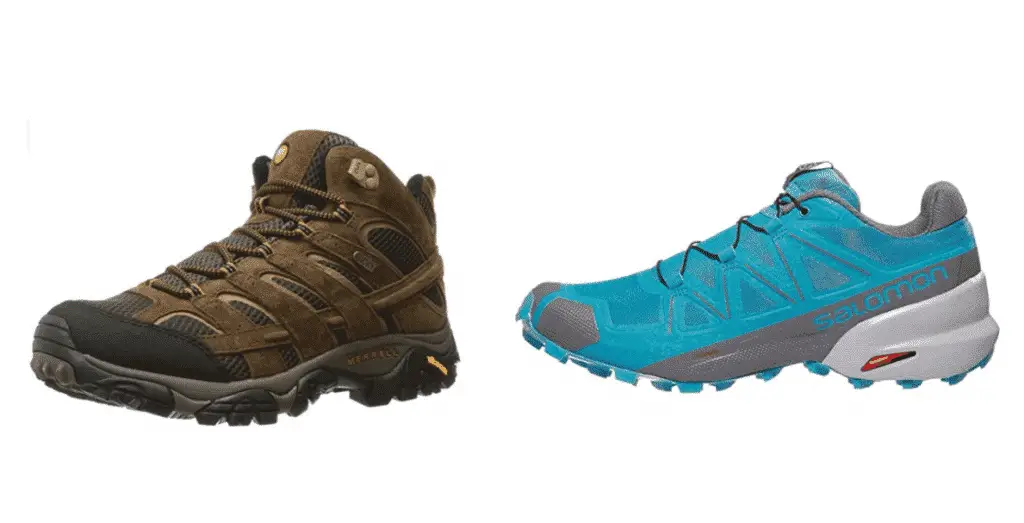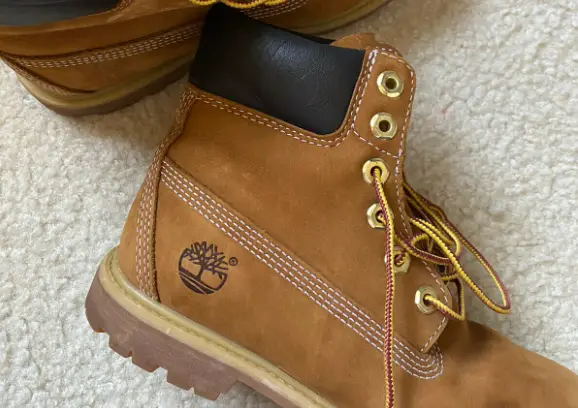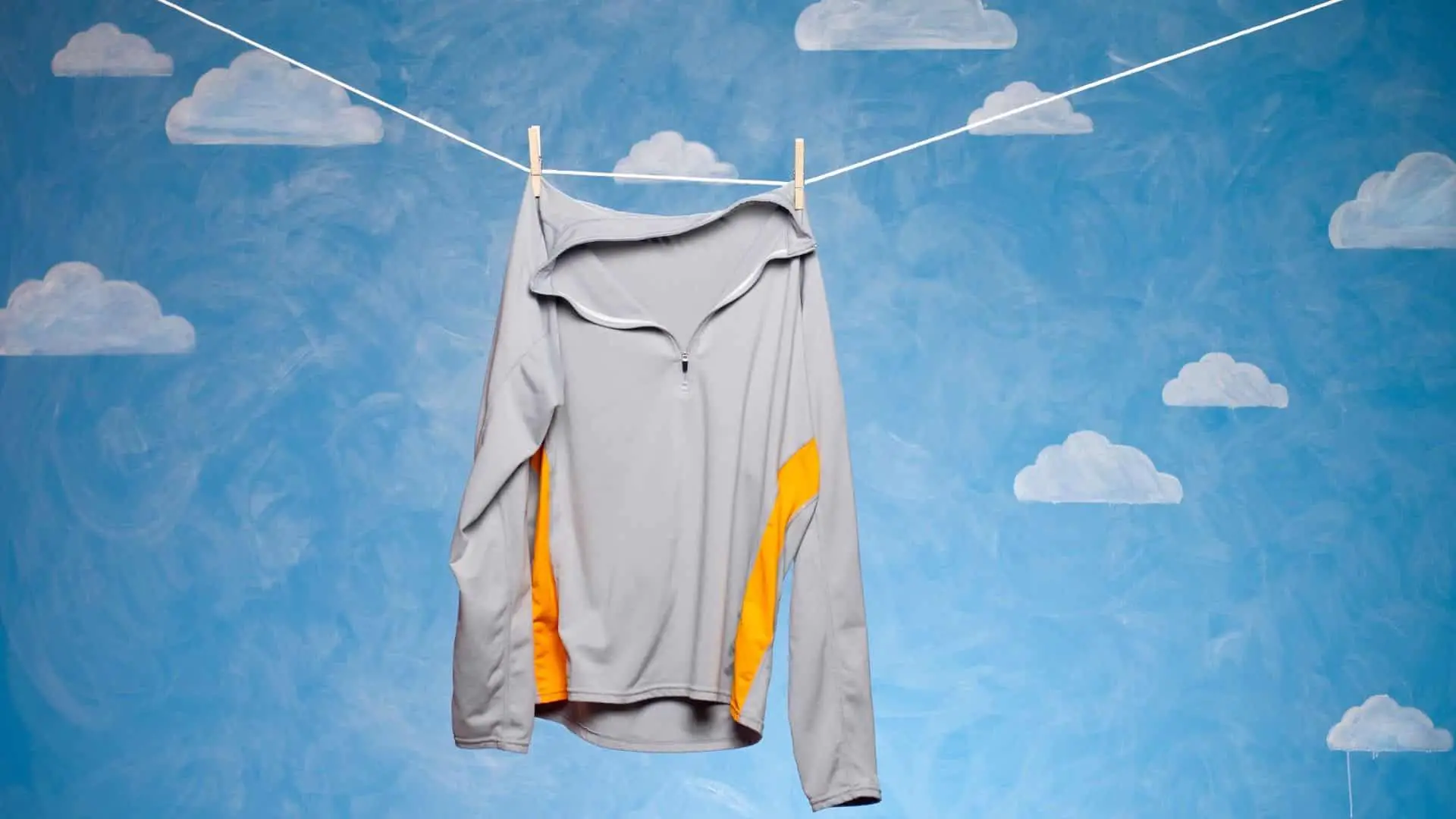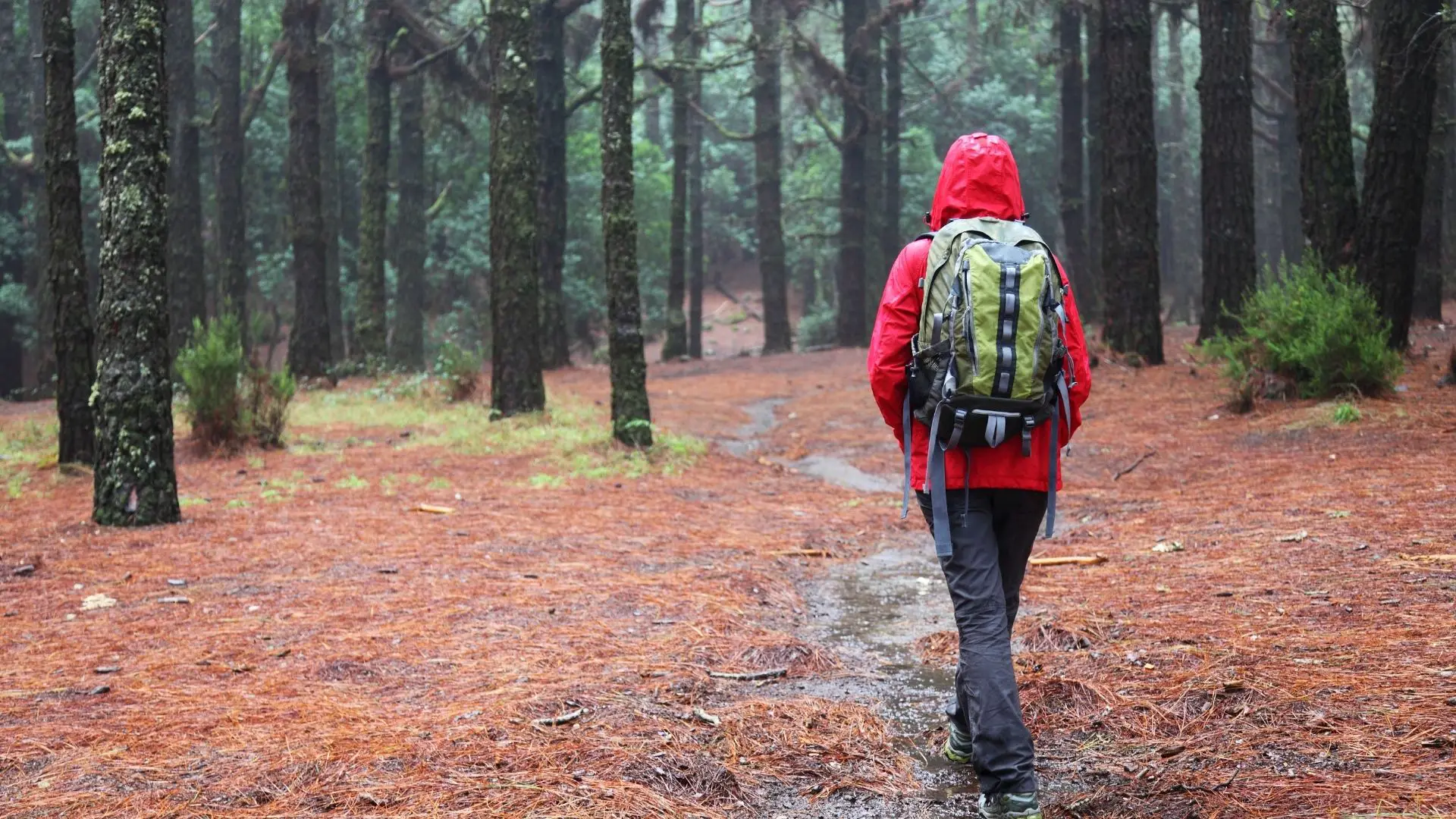Hikers have been asking the same question for decades. Do you really need to spend the extra money on a pair of dedicated hiking boots/shoes? I’m constantly asked that question and the answer is simple. Most hikers don’t really need hiking boots (until they do). So at what do you need to wear hiking boots?
You only need to wear hiking boots or trail runners on long hikes in difficult terrain. On local 2-3 hour hikes you should be able to get by with regular running or athletic shoes. I only recommend wearing hiking boots in cold weather and inclement conditions where you need the extra traction.
Most people can get by with regular athletic shoes on short local hikes. Obviously, hiking boots/shoes would be a better option, but there’s not much risk involved on short 2-3 hour hikes. Even if your shoes fall apart you only have a short walk back to the parking lot. So why does everybody seem to think you need to wear hiking boots?
It probably boils down to the old Boy Scout motto that you should always Be Prepared. You never know when you’re going to need a pair of durable boots or trail runners. I wouldn’t want to get stuck 20+ miles into the backcountry with a pair of torn up shoes (carry some duct tape).
I advise most people to wait until they start getting into longer day hikes and backpacking trips before picking out shoes. Go for it if you have the money! If you’re broke like me than you might as well wait until you really need them. So why do you need to wear hiking boots?
Why Wear Hiking Boots While Hiking A Trail?

As I mentioned above, you probably don’t need hiking boots while hiking short local trails. You can get by with regular athletic shoes when there’s little risk involved, but there’s definitely a time when you need to buy real hiking shoes.
There are 3 main times when you’ll need to invest in a good pair of shoes. If you’re going on winter hikes, navigating difficult terrain, or planning a longer hikes and backpacking trips (5+ Hour Hikes). Hiking boots can really reduce your risk of injury on the trail.
- Cold Weather: You really need to buy a pair of real hiking boots if you plan on backpacking or camping in the winter. Hiking boots are designed to keep out water and provide additional insulation against the cold. Regular boots might be waterproof but they’re not designed to be worn off road. They’re not light enough to be worn over longer 5+ mile hikes.
- Difficult/Technical Terrain: I wouldn’t want to try hiking through muddy/mucky trails in regular running shoes. They don’t have good traction so you’ll be slipping and sliding all over the place. Plus they’ll be almost impossible to dry when your shoes end up getting soaked in a stream crossing.
- Longer Hikes: Outdoor companies understand that there can be life or death consequences if your boots fall apart on the trail. You can really rack up the miles in a good pair of hiking boots or trail runners. My trail runners have lasted well over 500 miles. They’re definitely on the end of their useful life, but they haven’t fallen apart (yet).
A Few Quick Questions To Ask Yourself
- Am I New To Hiking? I would wait a few months before picking out a pair of hiking boots. Think about how many times you’ve started going to the gym only to quit 2 months later. Do you really want to blow $150 on a pair of nice hiking boots. I would only buy hiking boots if early on if I was planning a long distance backpacking trip. The wide stable base of hiking boots provides a stable surface when you’re carrying a heavy loaded pack. This is especially important when your bodies physically exhausted and you start making little mistakes.
- How’s The Terrain?: Difficult terrain may require technical shoes. What you need depends on the type of terrain you’re facing. I prefer boots on uneven rocky terrain and technical scrambles where I’m moving at a slow pace. Trail runners with an aggressive tread work better in mud and when there’s multiple stream crossings on a trail. My trail runners dry in less than an hour after being fully submerged with water. Pair those with fast drying merino wool socks (like these) and you’ll be comfortable even when your feet are completely soaked.
- What’s My Body Like (Injury Prone)?: You probably already know if you’re prone to ankle injuries. Did you have high ankle sprains playing sports in high school? Than you should get a pair of hiking boots that provide ankle stability or high top trail runners. I toss on a pair of Salomon Trail Gaiters whenever I’m navigating a new trail. They keep your ankles from getting banged up on rough terrain.
- How Fast Do I Want To Move: The average hiker should try to keep a 2-3 mph pace. You might move slower on steep difficult terrain or faster on flat/easy terrain. I like to start off my hike with a quick 2-3 mile jog and keep up a brisk pace from there. So that’s why I use trail runners instead of regular hiking boots. I’ll switch over to hiking boots in cold weather and especially muddy days where I need to keep my pace down.
You Might Not Need To Wear Hiking Boots
Think about the type of hikes you go on for a second. Do you really need to buy a pair of hiking boots? Go for it if you have a bunch of money, but 99% of people can get by with a good pair of running/athletic shoes.
You definitely don’t need to buy hiking boots if you’re just going for short 1-2 hour back in the woods. Wear a pair of regular athletic shoes in the dry summer, or waterproof leather boots in muddy spring/fall and colder weather. Just don’t wear a brand new pair of Nikes that you don’t want to get muddy.
All that really matters is that you’re protecting your feet and ankles. Long pants to keep ticks away and durable shoes that won’t fall apart. It’s that simple!
What Do I Need Out Of My Hiking Footwear?
There are three basic needs that need to be met when picking out hiking footwear. Your shoes need to be able to protect your feet from the elements (with or without ankle support). They should be comfortable to prevent blisters and wear on your body. They need to be lightweight to prevent wear and tear on your body over a long hike.
There’s an old hiking saying that applies here “A pound on your feet is like five pounds on your back”. That’s not entirely accurate, but heavy shoes can really wear you down over a long hike.
Surprisingly, waterproofing really shouldn’t be much of a concern in warmer weather. It’s better to buy well ventilated shoes that will dry out fast and plan on wearing merino wool socks that are comfortable when wet(no blisters). Check out my post explaining why you should be wearing merino wool hiking socks for more info.
Hiking Boots vs Trail Runners

The hardest choice you’ll have to make is choosing between hiking boots and trail runners. Hiking boots give you added stability protecting your ankles, but that comes at a cost. The added weight can wear down your body over the course of a long hike.
On the other hand, trail runners are just like traditional running shoes, but with extra durability and traction. Trail runners (I wear these) are way more comfortable than a traditional hiking boot. They don’t offer as much ankle support, but the weight reduction puts less stress on the rest of your body.
Waterproofing might seem like a huge advantage for hiking boots but I’ve found that waterproofing isn’t all that it’s cracked up to be. Your boots might be able to withstand the occasional puddle, but what happens when your boots get completely soaked from rain or sweat. That water has nowhere to go and it will take days to dry out your boots.
On the other hand, trail runners are designed to let water in since they dry so fast. My trail runners will be completely dry in less than an hour after being fully submerged in water. Pair them with a good pair of merino wool socks that are comfortable when wet and you’re good to go.
I go with Smartwool since they’re way more comfortable, but Darn Tough is another great option. For some reason, it seems like Smartwool uses a gentler type of wool making them super soft. Darn Tough seem to be more durable, but the synthetic blend isn’t as soft.
| Hiking Boot: Advantages | Trail Runner: Advantages |
|---|---|
| Added Stability: It’s hard to describe the added stability you get from hiking boots. The tight lacing and high sidewalls make your feet feel planted on the ground. This is great in technical terrain when slipping could lead to serious injury. | No Break In Period: Hiking boots can take weeks to break in and you still might end up with blisters and chafing issues. Trail runners are comfortable right out of the box. |
| Extreme durability: It will take a long time to wear through hiking boots (1000s of miles). Dry rot is your worst enemy. | Breathability: There are 2 main advantages when it comes to breathability. Your feet will get less sweaty on dry days and shoes will dry faster in wet conditions. Plan on wearing merino wool socks so you’re comfortable in wet conditions. |
| Foot and ankle protection: There’s less chance of rolling your ankle in hiking boots. However, the high ankles and added sidewall thickness add weight to your boot. | Lightweight: I could easily run a 10k in my trail runners. The lightweight design allows you to keep a fast pace over a long distance. |
| Waterproofing: Waterproofing can be a good or bad thing. It’s nice for getting through puddles, but it will lead to sweating and blisters. Merino wool socks (my favorite) can help prevent blisters in wet conditions. | Dry Fast: Trail runners are designed to let water in and dry out fast so they take some getting used to. Always wear merino wool socks (my favorite) to prevent blisters and speed up drying times. |
| Warmer: Warmth is great on cold weather hikes, but leads to sweating and blisters in the summer. Waterproofing makes matters worse since there’s nowhere for the sweat to go. | Cool In Summer: The mesh sidewalls and lightweight design makes trail runners cool in the summer. You won’t have to worry about sweaty, worn down feet after a long hike. |
| All Around Traction: Good all around traction for every situation. You only need one pair of boots for everything. There’s less traction options for various terrain. | Traction Options: A wide range of traction options for any type of trail condition. I have a second pair of mud running shoes that have longer spikes for hiking mucky/muddy conditions. |
| Hiking Boot: Disadvantages | Trail Runner: Disadvantages |
|---|---|
| Heavy/Bulky: Hiking boots aren’t comfortable compared to traditional shoes. There’s an old saying “a pound on your feet equals five pounds on your back”. That’s not entirely accurate, but you’ll notice a huge difference on longer backpacking trips. | Less Durability: I’ve had the same pair of hiking boots for a decade and they’re still in decent shape. In that same timeframe I’ve went through 10 pairs of trail runners. Mesh uppers will not last as long as traditional leather hiking boots. |
| Need a Break In Period: I recommend wearing your hiking boots around the house for 2-3 weeks before stepping foot on the trail. | Less Support: Stick to hiking boots if you have ankle issues. Less support and stability can lead to injury. |
Comparing Traction Between Trail Runners and Hiking Boots
Hiking boots usually have thick lugs that grip down into the soil providing all around traction on a variety of surfaces. These are great for trips when you don’t know what you’re getting into.
Trail runners offer way more versatility when it comes to traction. They usually fall into 2 basic categories(some hybrids). You have light trail runners that offer minimal traction for well manicured trails and rugged/off-trail runners with thick spicks for muddy/mucky terrain. Some even have a sticky rubber compound (kind of like footballs stickum) that’s used on wet rocks and logs.




